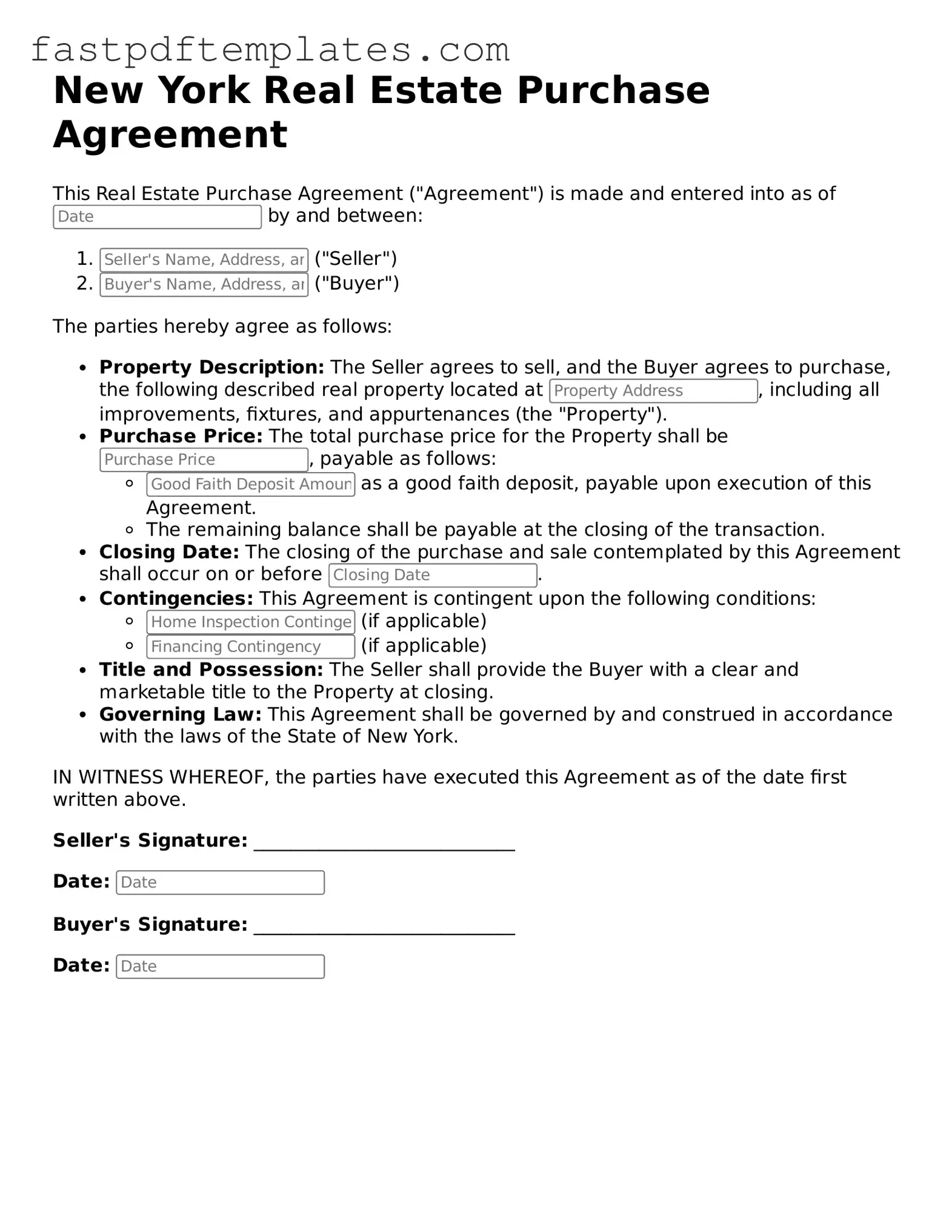The New York Real Estate Purchase Agreement form shares similarities with the Residential Purchase Agreement, commonly used in various states. Both documents outline the terms and conditions under which a buyer agrees to purchase a property from a seller. They detail essential elements such as the purchase price, contingencies, and timelines for closing. Just like the New York form, the Residential Purchase Agreement protects the interests of both parties by clearly defining their rights and obligations throughout the transaction process.
Another document that resembles the New York Real Estate Purchase Agreement is the Commercial Purchase Agreement. While primarily used for commercial properties, this agreement also includes key components such as the purchase price, due diligence periods, and financing contingencies. The main difference lies in the specific legal considerations and zoning laws applicable to commercial real estate, but both documents aim to provide clarity and security for buyers and sellers alike.
The Offer to Purchase form is another document that shares common ground with the New York Real Estate Purchase Agreement. This form acts as a preliminary proposal from a buyer to a seller, outlining the buyer's intent to purchase the property under specified terms. Once accepted, it often leads to the creation of a more detailed purchase agreement, mirroring the initial intentions laid out in the New York form.
The Lease Purchase Agreement also exhibits similarities to the New York Real Estate Purchase Agreement. This document allows a tenant to rent a property with the option to purchase it later. Like the purchase agreement, it includes terms regarding the purchase price and conditions under which the sale will occur. Both documents aim to protect the interests of the parties involved while outlining their respective rights and responsibilities.
A land contract, or contract for deed, is another document that parallels the New York Real Estate Purchase Agreement. In this arrangement, the buyer agrees to purchase a property while making payments directly to the seller over time. Similar to a purchase agreement, it specifies the purchase price and payment terms, but it differs in that the seller retains legal title until the buyer fulfills all payment obligations.
The Real Estate Option Agreement is yet another document akin to the New York Real Estate Purchase Agreement. This agreement grants the buyer the exclusive right to purchase a property within a specified timeframe. While it does not constitute a purchase itself, it outlines the terms under which the buyer can exercise their option, much like the contingencies found in the New York form.
The Seller Financing Agreement is also similar to the New York Real Estate Purchase Agreement. In this arrangement, the seller acts as the lender, allowing the buyer to make payments over time instead of securing traditional financing. Both documents detail the terms of the sale, including the purchase price and payment schedule, ensuring that both parties understand their roles and responsibilities.
The Short Sale Agreement is another document that shares characteristics with the New York Real Estate Purchase Agreement. This agreement occurs when a property is sold for less than the amount owed on the mortgage. It outlines the terms under which the sale can proceed, including lender approval. Like the New York form, it aims to protect the interests of both the buyer and seller while navigating the complexities of a distressed property sale.
Finally, the Closing Statement, also known as the HUD-1 Settlement Statement, is similar in that it summarizes the final financial details of a real estate transaction. While not a purchase agreement itself, it includes the terms agreed upon in the New York Real Estate Purchase Agreement, detailing the costs associated with the sale, including closing costs and any adjustments. Both documents work together to ensure transparency and clarity at the closing table.
